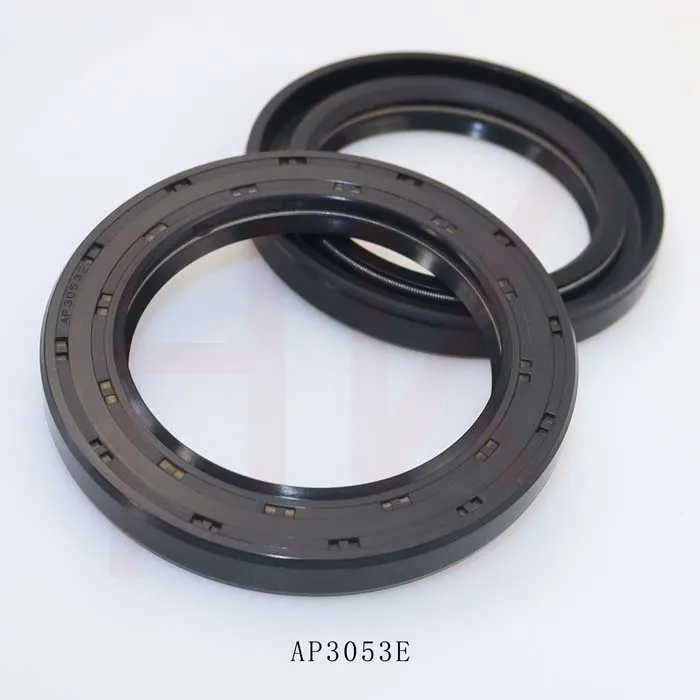aug. . 10, 2024 18:00 Back to list
Understanding the Importance of Axle Hub Seals in Vehicle Maintenance and Performance
Understanding Axle Hub Seals Importance and Maintenance
Axle hub seals play a crucial role in the overall performance and longevity of vehicles, especially those that are heavier or used in off-road conditions. These seals are essential components designed to prevent lubricant leakage from the axle housing while also blocking contaminants from entering the axle assembly. Understanding how axle hub seals work and maintaining them can help vehicle owners avoid costly repairs and ensure optimal performance.
Function of Axle Hub Seals
The primary function of axle hub seals is to create a barrier between the internal lubricants and the external environment. In vehicles, axles are responsible for transmitting power from the engine to the wheels, which generates significant friction and heat. To manage these aspects effectively, axles are lubricated with oil or grease, which helps reduce wear and tear. However, if these lubricants leak out or if dirt and debris enter the axle assembly, it can lead to severe damage and premature failure.
Axle hub seals ensure that the lubricant remains contained within the assembly while keeping contaminants at bay. The seals are typically made from durable materials such as rubber or neoprene, designed to withstand varying temperatures and pressures. They fit tightly around the axle shafts and use a lip to create a seal that adapts to movements and vibrations that occur during vehicle operation.
Signs of a Failing Axle Hub Seal
Recognizing the early signs of a failing axle hub seal can save you from extensive damage. Common indicators include
1. Leaking Fluid One of the most noticeable signs is the presence of fluid leaking near the wheels or under the vehicle, which could indicate that the seal is compromised. 2. Unusual Noises Grinding or whining noises while driving can signal that the lubricant levels are low, leading to increased friction in the hub assembly.
axle hub seal

4. Poor Handling If you notice a change in how your vehicle handles, such as pulling to one side or instability, it may be related to issues with the axle hub or its seals.
Maintenance and Replacement
Regular maintenance is vital to prolong the life of axle hub seals. Here are some essential tips
1. Lubrication Checks Periodically check the axle lubricant levels and quality. If it appears dirty or degraded, replace it to maintain optimal performance.
2. Visual Inspections During routine maintenance, inspect the axle hub seals for cracks, wear, or any signs of leakage. This is especially important after off-road use or exposure to harsh conditions.
3. Professional Inspections Having a qualified mechanic conduct periodic inspections can help identify potential issues before they escalate, ensuring that the seals and axles are functioning correctly.
Replacing a faulty axle hub seal involves removing the wheel and brake assembly, which can be labor-intensive. However, addressing a failing seal promptly can prevent more extensive and costly repairs related to axle damage.
Conclusion
Axle hub seals, while small components, are vital to the health of a vehicle's axle system. They ensure that lubricants stay contained and that contamination is kept at bay. By understanding the importance of these seals and incorporating regular maintenance checks, vehicle owners can ensure a smoother driving experience and prolong the life of their vehicles. Always consult with a professional if you suspect your axle hub seals may be failing, as timely interventions can save you from significant future expenses.
-
The Trans-formative Journey of Wheel Hub Oil Seals
NewsJun.06,2025
-
Graphene-Enhanced Oil Seals: Revolutionizing High-Pressure Oil Sealing
NewsJun.06,2025
-
Future of Hydraulic Sealing: Advanced Intelligent TCN Oil Seals
NewsJun.06,2025
-
Don’t Let a Broken TCV Oil Seal Ruin Your Day
NewsJun.06,2025
-
Bio-Inspired Dust Seals for Better Sealing Performance
NewsJun.06,2025
-
Biodegradable and Sustainable Hydraulic Seal Materials
NewsJun.06,2025
-
Top Oil Seal Solutions for Your Industrial Needs
NewsMay.22,2025
Products categories
















